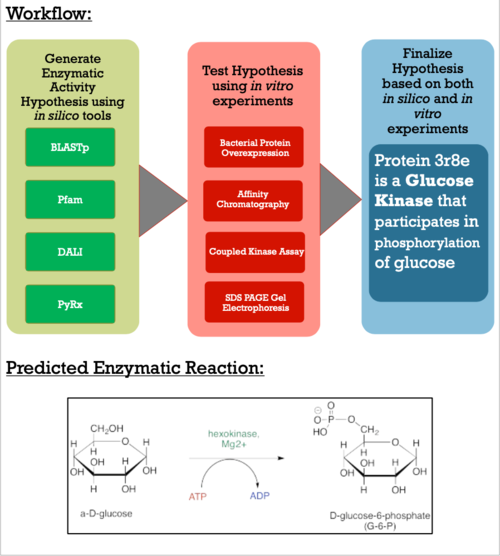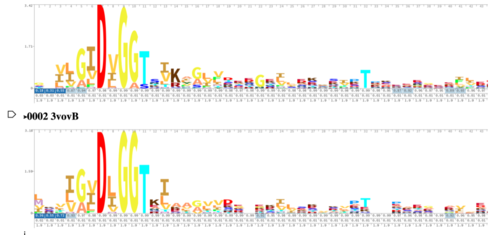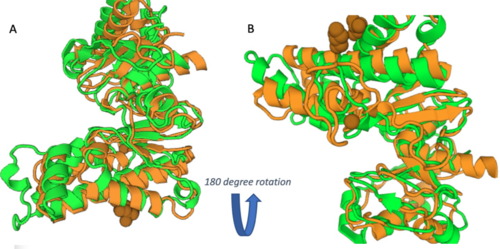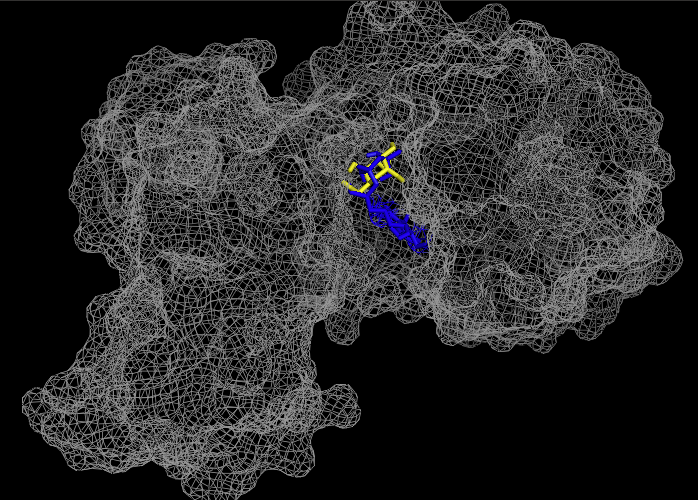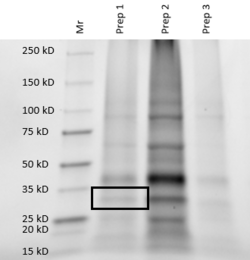BASIL2022GV3R8E
From Proteopedia
| Line 6: | Line 6: | ||
As apart of a research project under the Biochemistry Authentic Scientific Inquiry Laboratory (BASIL) consortium, our group was tasked with characterizing and identifying the function of this protein to provide further insight of the protein's relationship to the bacteria. Like many proteins with solved crystal structures, protein 3r8e has an uncharacterized and unconfirmed function. Previous research has shown that there is relationship between our POI and bacteria found in soil. Current research techniques have made the role more apparent and below is the general workflow detailing how we generated our conclusions. | As apart of a research project under the Biochemistry Authentic Scientific Inquiry Laboratory (BASIL) consortium, our group was tasked with characterizing and identifying the function of this protein to provide further insight of the protein's relationship to the bacteria. Like many proteins with solved crystal structures, protein 3r8e has an uncharacterized and unconfirmed function. Previous research has shown that there is relationship between our POI and bacteria found in soil. Current research techniques have made the role more apparent and below is the general workflow detailing how we generated our conclusions. | ||
| - | [[Image:Workflow1.png| | + | [[Image:Workflow1.png|500px|]] |
== Methods == | == Methods == | ||
As you can see in the workflow portion above, we used a variety of in silico tools such as BLASTp, Pfam, DALI, PyRx, and PyMol to help us generate a hypothesis for our uncharacterized proteins function. Using the FASTA sequence found in the Protein Data Bank file, we then were able to find similarities between 3r8e and other characterized proteins. While exploring the DALI database, a significant structural alignment hit was found with protein 3vov. Structural and sequence alignment analysis with protein 3vov, a hexokinase, is provided below. | As you can see in the workflow portion above, we used a variety of in silico tools such as BLASTp, Pfam, DALI, PyRx, and PyMol to help us generate a hypothesis for our uncharacterized proteins function. Using the FASTA sequence found in the Protein Data Bank file, we then were able to find similarities between 3r8e and other characterized proteins. While exploring the DALI database, a significant structural alignment hit was found with protein 3vov. Structural and sequence alignment analysis with protein 3vov, a hexokinase, is provided below. | ||
| - | [[Image:3R8EDALIHMM.png| | + | [[Image:3R8EDALIHMM.png|500px|]] [[Image:3R8EDali180.png|500px|]] |
With this binding affinity in mind, we visualized the active site interactions amongst our POI, glucose, and ATP. To do this, we used PyMol to generate a mesh view of our protein, below, and docked glucose (yellow) and ATP (blue) in the proposed active site. These results, along with supporting evidence from the previous in silico tools, allowed us to continue testing our hypothesis with confidence. | With this binding affinity in mind, we visualized the active site interactions amongst our POI, glucose, and ATP. To do this, we used PyMol to generate a mesh view of our protein, below, and docked glucose (yellow) and ATP (blue) in the proposed active site. These results, along with supporting evidence from the previous in silico tools, allowed us to continue testing our hypothesis with confidence. | ||
| - | [[Image:MeshviewProteinW_atp_glc.png|px| | + | [[Image:MeshviewProteinW_atp_glc.png|px|300]] |
To validate that glucose actually binds and interacts with our protein of interest, we conducted a PyRx in silico docking experiment with a total of five hexose substrates. Other substrates tested include fructose, galactose, lactose, and ribose, however, experimental in silico docking results for those substrates were significantly less than glucose. The binding affinity of glucose was -5.1 kcal/mol, which strengthens our idea that glucose is phosphorylated by our protein of interest. The confidence behind our in silico results allowed us to move into testing our hypothesis in vitro and because ATP is a commonality amongst sugar kinases, an <scene name='90/904995/3r8ec_w_glc_and_atp/1'>interactive structure</scene> has been provided to represent interactions of glucose and ATP in the active site. | To validate that glucose actually binds and interacts with our protein of interest, we conducted a PyRx in silico docking experiment with a total of five hexose substrates. Other substrates tested include fructose, galactose, lactose, and ribose, however, experimental in silico docking results for those substrates were significantly less than glucose. The binding affinity of glucose was -5.1 kcal/mol, which strengthens our idea that glucose is phosphorylated by our protein of interest. The confidence behind our in silico results allowed us to move into testing our hypothesis in vitro and because ATP is a commonality amongst sugar kinases, an <scene name='90/904995/3r8ec_w_glc_and_atp/1'>interactive structure</scene> has been provided to represent interactions of glucose and ATP in the active site. | ||
Revision as of 15:32, 26 September 2022
Characterization of the 3r8e Protein, a Novel Glucose Kinase
| |||||||||||
References
1. Blastp [Internet]. Bethesda (MD): Natiobal Library of Medicine (US), National Center for Biotechnology Information; 2004- [cited 2022 March]. Available from: (https://blast.ncbi.nlm.nih.gov/Blast.cgi?PAGE=Proteins)
2. BASIL. https://basilbiochem.github.io/basil/
3. Holm L (2020) Using Dali for protein structure comparison. Methods Mol. Biol. 2112, 29-42.
4. Small- Molecule Library Screening by Docking with PyRx. .Dallakyan S, Olson AJ Methods Mol Biol. 2015;1263:243-50. The full-text is available at https://www.researchgate.net/publications/2739554875. Small-Molecule Library Screening by Docking with PyRx.
5. Pfam: The Protein families database in 2021 J. Mistry, S. Chuguransky, L. Williams, M. Qureshi, G.A. Salazar, E.L.L. Sonnhammer, S.C.E. Tosatto, L. Paladin, S. Raj, L.J. Richardson, R.D. Finn, A. Bateman Nucleic Acids Research (2020) doi: 10.1093/nar/gkaa913
6. The PyMOL Molecular Graphics System, Version 1.2r3pre, Schrödinger, LLC.
Proteopedia Page Contributors and Editors (what is this?)
Dalton Dencklau, Michel Evertsen, Bonnie Hall, Jaime Prilusky
